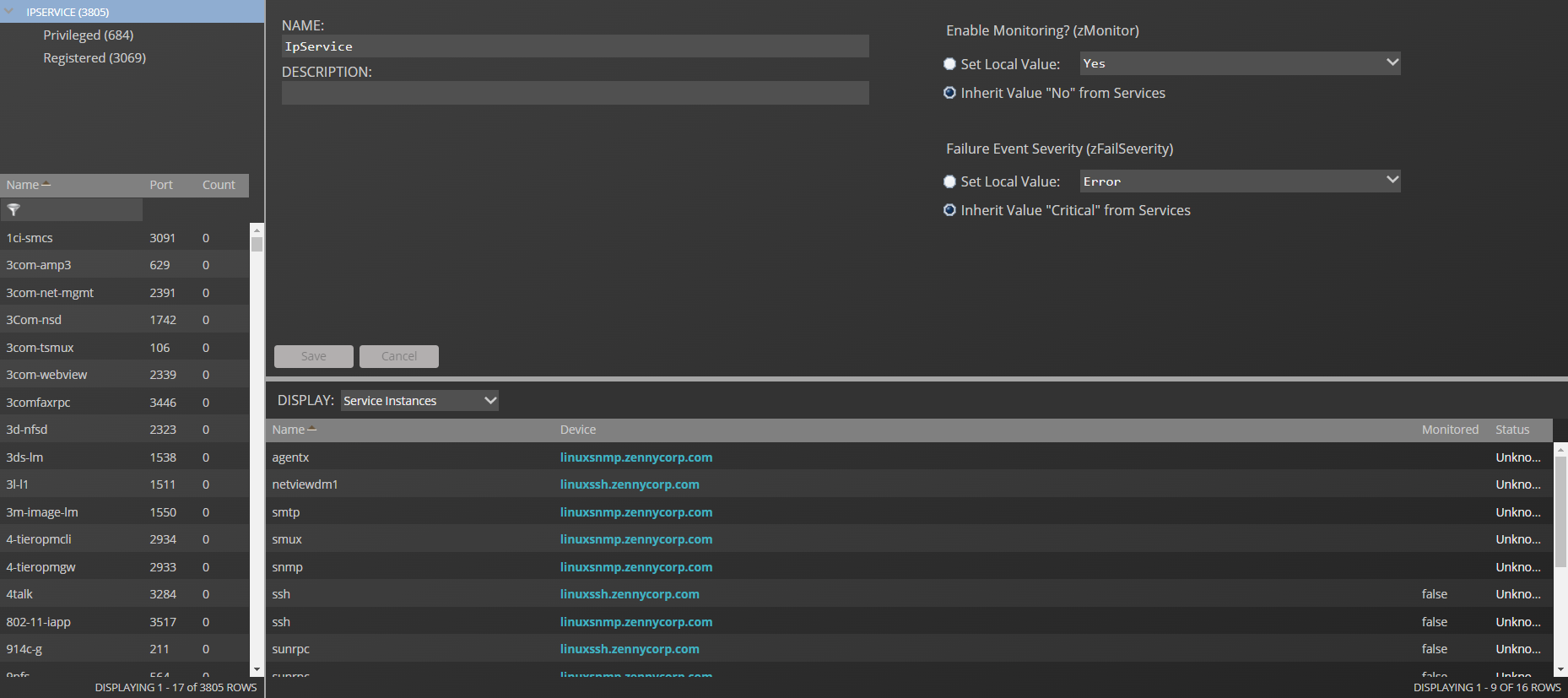IP service monitoring
The INFRASTRUCTURE > IP Services page lets you manage and monitor IP services that are running on your network. Monitored IP services are tested with a simple TCP client to ensure they are listening and responding appropriately. IP service monitoring also has the ability to send a clear-text command to a TCP port (similar to doing the same in telnet manually) and evaluate the response with a regular expression pattern.
The tree view lists all monitored IP services. Filter this list by using the active search area at the top of the view.
The details area shows:
- Service class description
- TCP port
- Associated service keys
To add or change details for a service class, enter or change information, and then click Save.
The lower section of the page lists currently running services in this class (by device), and shows their monitoring status. You can also display Configuration Properties by selecting that from the drop-down list.
Enabling IP service monitoring
You can choose to monitor individual services or service classes.
When monitoring a service class, you can choose not to monitor one or more individual services in the class. For example, the SMTP service class is monitored by default, but may not be a critical service on some devices. In this case, you can disable its monitoring on those devices.
Note
-
If a service is configured to listen only on local host (127.0.0.1), then it is not monitored by default.
-
When adding a new IP service that uses a port value higher than 1024, you need to increase the value of zIpServiceMapMaxPort to a number higher than the port you are monitoring.
To enable monitoring for a service class or service:
- In the tree view, select the service class or service to monitor.
-
Make one or more selections:
-
Enable Monitoring (zMonitor) - By default, Inherit Value is selected for all services below the IPService node. When selected, the service class or service will inherit monitoring choices from its parent. If you want to individually enable monitoring choices, select the Set Local Value option, and then select a value.
-
Failure Event Severity (zFailSeverity) - By default, Inherit Value is selected for all services below the IPService node. When selected, the service class or service will inherit severity level choices from its parent. If you want to individually select severity levels, select the Set Local Value option, and then select a value.
-
-
Click Save to save your choices.
Using the predefined /Server/Scan device class
The predefined /Server/Scan device class is an example configuration for monitoring TCP services on devices using a port scan. If you have a device that you want to monitor for service availability alone, you can place it under this device class. The system will not collect performance data for devices in this class.
